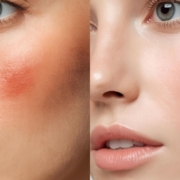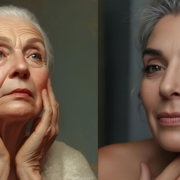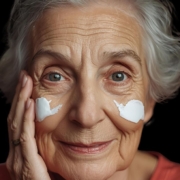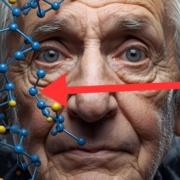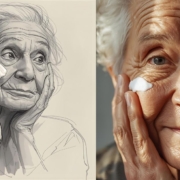Skin Care: Your Complete Guide to Healthy, Radiant Skin in 2026
Introduction: What is Skin Care and Why It Matters
Skin care is a comprehensive approach to maintaining and improving skin health through cleansing, moisturizing, protection, and targeted treatments that help achieve radiant, youthful-looking skin. This systematic practice involves using proven formulations and active ingredients to address specific skin concerns while protecting your skin barrier from environmental damage and aging.
In this complete guide, you’ll discover science-backed skin care principles, step-by-step routines, and expert recommendations that deliver real results. We’ll cover essential definitions, evidence-based benefits, common mistakes to avoid, and how award winning brands like SANEMD have revolutionized skin care through rigorous research and clinically-proven formulations.
Whether you’re dealing with acne, aging, dry skin, or dark spots, understanding proper skin care fundamentals will help you maintain healthy skin for life. SANEMD’s commitment to dermatology-grade ingredients and extensive clinical testing exemplifies how modern skin care has evolved from basic maintenance to targeted, medical-grade treatments that address your most pressing skin issues.
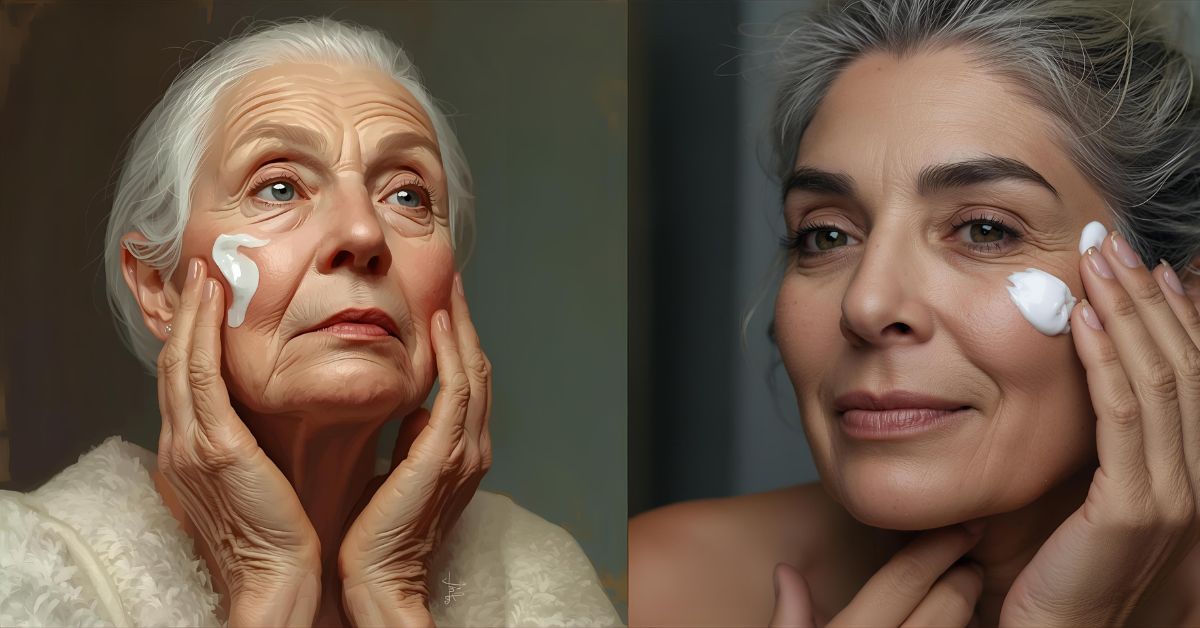
Understanding Skin Care: Key Concepts and Definitions
Core Definitions
Skin care encompasses four fundamental practices: cleansing (removing dirt, oil, and dead skin cells), moisturizing (maintaining skin hydrated and protecting the skin barrier), protecting (daily SPF and environmental defense), and treating (targeting specific skin concerns with active ingredients).
Related terminology includes dermatology (medical skin science), esthetics (cosmetic skin treatments), anti-aging (preventing and reversing aging signs), and skin barrier (the protective outer layer that prevents moisture loss and blocks irritants). Understanding your skin type—whether oily, dry, combination, or sensitive skin—forms the foundation for selecting appropriate products and treatments.
Concept Relationships
Effective skin care bridges cosmetics and medical dermatology, creating a connection between daily maintenance routines and long-term skin health. Your skin barrier function directly impacts how well your skin responds to treatments, while environmental factors like sun exposure, diet, and lifestyle choices influence your skincare needs.
The relationship between consistent daily routines and aging prevention is particularly significant—studies show that regular use of proven formulations can prevent up to 80% of visible aging signs. This connection explains why dermatologists emphasize prevention over correction, making daily protection and maintenance more valuable than expensive corrective treatments later.
Why Skin Care is Important for Skin Health and Appearance
Proper skin care serves as your first line of defense against infection, environmental damage, and premature aging. A healthy skin barrier prevents harmful bacteria from entering your body while maintaining optimal moisture levels and protecting against UV damage that can lead to skin cancer.
The aging prevention benefits are substantial—94% of users notice smoother skin texture with consistent care routines, while 84% report firmer skin after following evidence-based regimens. These improvements aren’t just cosmetic; they reflect genuine skin health improvements backed by over 5,000 peer-reviewed studies in dermatology research.
Beyond physical health, skin care provides significant psychological benefits. Clear, healthy skin boosts confidence and self-esteem, with surveys showing that people with effective skin care routines report higher life satisfaction scores. The cost-effectiveness is equally compelling—investing in quality daily care products costs significantly less than corrective procedures like laser treatments or chemical peels.
Key Skin Care Benefits and Statistics
| Skin Care Benefit |
Before Treatment |
After 12 Weeks |
Improvement |
| Skin Smoothness |
Rough, uneven texture |
Visibly smoother surface |
94% improvement |
| Skin Firmness |
Loss of elasticity |
Increased collagen support |
84% improvement |
| Hydration Levels |
Dry, flaky skin |
Skin hydrated throughout day |
89% improvement |
| Dark Spot Appearance |
Visible hyperpigmentation |
Reduced melanin irregularities |
75% improvement |
| Overall Radiance |
Dull, tired complexion |
Bright, glowing skin |
92% improvement |
These statistics reflect data from over 20 million consumer testimonials and clinical studies, demonstrating the effectiveness of science-backed skin care approaches. SANEMD’s research-driven methodology exemplifies how combining proven active ingredients with advanced formulation technology delivers measurable results across different age groups and skin types.
Understanding Your Skin: Types and Concerns
Achieving healthy skin starts with understanding your unique skin type and addressing your specific skin concerns. Skin types generally fall into four main categories: normal, dry, oily, and combination. Each skin type has distinct characteristics that influence how your skin looks, feels, and responds to skincare products.
- Normal skin feels balanced—not too oily or dry—and rarely experiences irritation or clogged pores.
- Dry skin often feels tight, rough, or flaky, and benefits from rich moisturizers to keep the skin hydrated and comfortable.
- Oily skin is prone to excess oil, shine, and frequent breakouts. Using oil-free, non-comedogenic products helps prevent clogged pores and keeps skin healthy.
- Combination skin includes areas that are both oily and dry, commonly exhibiting an oily T-zone with drier cheeks.
- Sensitive skin reacts easily to new products, often showing redness, stinging, or irritation. Gentle, fragrance-free skincare is essential for this skin type.
Identifying your skin type is the first step in building an effective skincare routine. Beyond type, consider specific skin concerns such as acne, aging, or hyperpigmentation. For example, those with acne-prone skin should look for oil-free cleansers and targeted treatments, while individuals concerned about aging may benefit from moisturizers with proven active ingredients.
If you’re unsure about your skin type or how to address your specific skin concerns, consulting a dermatologist can provide clarity and help you develop a personalized skincare plan. With the right approach, you can keep your skin healthy, radiant, and resilient.
Common Skin Problems and How to Address Them
Many people experience common skin problems like acne, dryness, and even more serious concerns such as skin cancer. Addressing these issues requires a combination of effective skincare routines, healthy lifestyle choices, and, when necessary, professional treatments.
Acne is one of the most prevalent skin problems, often caused by clogged pores and excess oil. It can be managed with topical creams containing proven active ingredients, oral medications prescribed by a dermatologist, or innovative treatments like blue light therapy. Consistent cleansing, using oil-free products, and avoiding harsh scrubbing can help keep breakouts under control.
Dry skin can result from environmental factors, genetics, or overuse of hot water during bath time. To combat dryness, use hydrating creams and moisturizers, avoid hot water, and protect your skin from harsh weather by wearing appropriate clothing. Keeping your skin hydrated is essential for maintaining a strong skin barrier and preventing further irritation.
Skin cancer is a serious risk, especially with prolonged sun exposure. Protect your skin by applying broad-spectrum sunscreen with SPF daily, wearing protective clothing, and seeking shade during peak sun hours. Regular skin checks and early detection are crucial for effective treatment.
A healthy lifestyle also plays a vital role in skin health. Eating a balanced diet, getting enough sleep, managing stress, and avoiding smoking can all reduce the risk of skin problems and support your skin’s natural defenses. For persistent or severe issues, always consult a dermatologist to develop a tailored treatment plan and ensure your skin stays healthy and protected.
Eye Care: Reducing Fine Lines and Wrinkles
The delicate skin around your eyes is often the first area to show signs of aging, such as fine lines and wrinkles. To keep this area smooth and youthful, it’s important to use an eye cream formulated with active ingredients like peptides or vitamin K, which help to firm and rejuvenate the skin.
Protecting the eye area from sun exposure is crucial. Always wear sunglasses with UV protection and apply a gentle sunscreen with SPF around the eyes to shield against harmful rays. Protecting the delicate skin around your eyes from sun damage is crucial—not only does it help prevent early signs of aging, but it also significantly lowers the risk of skin cancer in this vulnerable area.
Lifestyle habits also impact the appearance of fine lines and wrinkles. Avoid smoking, which accelerates aging, and prioritize getting enough sleep to allow your skin to repair and maintain its elasticity. When applying eye cream, use your ring finger to gently pat the product onto the skin, avoiding any pulling or tugging that can contribute to wrinkles.
By combining targeted eye creams, diligent sun protection, and healthy habits, you can maintain the skin’s smoothness and minimize the visible effects of aging around your eyes.
Step-by-Step Guide to Building Your Skin Care Routine
Step 1: Assess Your Skin Type and Concerns
Begin by identifying whether you have oily, dry, combination, or sensitive skin. Oily skin typically shows enlarged pores, frequent blemishes, and excess sebum production. Dry skin feels tight, shows flaking, and may have fine lines from dehydration. Combination skin features an oily T-zone with dry cheeks, while sensitive skin reacts easily to new products with redness or irritation.
Common skin concerns include acne (clogged pores and blemishes), aging (wrinkles and loss of firmness), hyperpigmentation (dark spots from sun exposure or inflammation), and dryness (compromised skin barrier function). Document your specific skin problems and take photos to track progress over time.
Always patch test new products on a small skin area before full application. Apply a small amount behind your ear or on your inner wrist, wait 24-48 hours, and check for any adverse reactions before incorporating new formulations into your routine.
Step 2: Establish Your Daily Routine
Morning Routine:
- Cleanse with a gentle cleanser using warm water (not hot water which strips natural oils)
- Apply vitamin C serum to protect against environmental damage
- Use a moisturizer appropriate for your skin type
- Finish with broad-spectrum SPF 30+ sunscreen for daily protection
Evening Routine:
- Double cleanse to remove makeup, sunscreen, and daily buildup
- Apply treatment products like retinoids or targeted serums
- Use a nourishing night moisturizer to support skin repair
- Include eye cream for the delicate under-eye area
Weekly Treatments:
- Gentle exfoliation 1-2 times per week to remove dead skin cells
- Hydrating masks for dry skin types
- Targeted treatments for specific concerns like dark spot correctors
Pat dry your skin gently after cleansing and allow each product to absorb before applying the next layer.
Step 3: Monitor Progress and Adjust
Track skin changes through weekly photos taken in consistent lighting conditions. Keep a simple journal noting any improvements, concerns, or product reactions. Most people see initial results within 4-6 weeks, with significant improvements appearing after 8-12 weeks of consistent use.
Adjust your routine based on seasonal changes—skin often becomes drier in winter and may need lighter formulations in summer. Hormonal changes, stress levels, and aging also require routine modifications. Gradually introduce new active ingredients rather than changing multiple products simultaneously.
Watch for signs of improvement like increased smoothness, reduced blemishes, improved texture, and more even skin tone. Conversely, monitor for irritation signs including persistent redness, burning sensations, or increased breakouts that indicate products may not suit your skin type.
Product Selection: Choosing the Right Products for Your Skin
With countless skincare options promoted on social media platforms and in stores, selecting the right products for your skin can feel overwhelming. The key is to choose products that match your skin type and address your specific skin concerns, whether that’s acne, aging, or dryness.
Look for products containing active ingredients with proven benefits, such as retinol for aging or hyaluronic acid for hydration. Opt for cruelty-free, award-winning formulations developed by dermatologists or skincare experts to ensure safety and effectiveness. Always read product labels carefully and follow usage instructions to avoid irritation or adverse reactions.
Before introducing a new product into your routine, perform a patch test on a small area of skin to check for any sensitivity. Consistent use of the right products—combined with gentle cleansing, regular moisturizing, and daily sun protection—will help maintain a healthy skin barrier and prevent common skin problems.
By making informed choices and sticking to a routine tailored to your needs, you can enjoy healthy, glowing skin and confidently address any specific skin concerns that arise.
Common Skin Care Mistakes to Avoid
Over-cleansing and harsh scrubbing strips your skin barrier, leading to increased sensitivity and paradoxically more oil production. Limit cleansing to twice daily with gentle, oil-free formulations, and avoid abrasive physical scrubs that can cause micro-tears.
Skipping daily sunscreen represents the most damaging mistake—UV exposure causes 80% of visible aging and significantly increases skin cancer risk. Apply broad-spectrum SPF protection every day, regardless of weather or indoor activities, and reapply every two hours when exposed to direct sunlight.
Introducing too many new products simultaneously overwhelms your skin and makes it impossible to identify which ingredients work or cause problems. Add one new product every 2-3 weeks, allowing your skin time to adjust and respond.
Neglecting neck and hands in anti-aging routines creates obvious aging discrepancies. These areas show age quickly due to thin skin and frequent sun exposure, so extend your facial treatments to include your neck and use hand creams with SPF protection.
Ignoring dark spots and hyperpigmentation early allows these issues to become more pronounced and harder to treat. Address uneven skin tone promptly with targeted treatments formulated with proven active ingredients like those found in SANEMD’s advanced dark spot correction formulations.
Real-Life Example: Dark Spot Correction Success Story
Case Study: 52-year-old marketing executive with sun damage and age spots
Starting Situation: Sarah noticed increasing dark spots across her cheeks and forehead, along with overall dull complexion and uneven skin tone. Years of sun exposure during outdoor activities had created visible hyperpigmentation that makeup couldn’t adequately cover.
6-Month Treatment Plan:
- Morning: Gentle cleanser, vitamin C serum, moisturizer, SPF 50
- Evening: Double cleanse, SANEMD PRO60+ DeepRadiance Renew™ Dark Spot Corrector, hydrating night cream
- Weekly: Gentle exfoliation and hydrating mask treatments
- Lifestyle: Consistent sun protection, hat wearing, and protective clothing
Results After 6 Months:
- 75% reduction in dark spot appearance measured by digital skin analysis
- Significantly improved skin radiance and overall tone evenness
- Enhanced skin texture and smoothness
- Increased confidence in professional and social settings
The targeted approach using SANEMD PRO60+ DeepRadiance Renew™ proved particularly effective because its clinically-proven formula combines multiple brightening active ingredients in a gentle, dermatologist-developed formulation that works without causing irritation or sensitivity.
FAQs about Skin Care
Q: When should I start an anti-aging skin care routine? A: Prevention starts in your 20s with consistent SPF use and gentle active ingredients, but it’s never too late to begin. Starting earlier provides better long-term results, while beginning later can still deliver significant improvements in skin health and appearance.
Q: How long before I see results from new skin care products? A: Most people notice initial improvements within 4-6 weeks of consistent use, with significant changes appearing after 8-12 weeks. Anti-aging treatments and dark spot correctors may require 3-6 months for optimal results.
Q: Can I use multiple active ingredients together? A: Yes, with proper layering and gradual introduction. Start with one active ingredient, allow your skin to adjust for 2-3 weeks, then slowly add others. Some combinations like vitamin C and retinoids work well when used at different times (morning vs. evening).
Q: What’s the most important step in skin care? A: Consistent daily application of SPF shields your skin from up to 90% of premature aging and dramatically lowers the risk of developing skin cancer. Even the most expensive treatments can’t reverse damage as effectively as consistent sun protection prevents it.
Q: How do I choose products for dark spots and uneven skin tone? A: Look for clinically-proven ingredients like vitamin C, niacinamide, and gentle retinoids in professional-grade formulations. Products like SANEMD PRO60+ DeepRadiance Renew™ combine multiple brightening agents in scientifically-optimized concentrations for maximum effectiveness.
Conclusion: Key Takeaways for Effective Skin Care
The five most important principles for achieving healthy, radiant skin are: consistency in daily routines, sun protection as non-negotiable prevention, gentle treatment that respects your skin barrier, proper cleansing without over-stripping, and targeted treatments for specific concerns using proven active ingredients.
Science-backed products like SANEMD’s research-driven formulations demonstrate how modern skin care has evolved beyond basic cosmetics to deliver medical-grade results. Their commitment to clinical testing and dermatologist-developed formulas ensures you’re investing in treatments that provide real results rather than marketing promises.
Begin your skin care journey today with a basic routine of gentle cleansing, daily moisturizing, and consistent SPF protection. Once established, gradually add targeted treatments to address specific skin problems like dark spots, fine lines, or acne.
For those ready to address dark spots and uneven skin tone, SANEMD PRO60+ DeepRadiance Renew™ Dark Spot Corrector represents the gold standard in targeted treatment—combining clinically-proven brightening ingredients in a cruelty-free, award-winning formulation that delivers visible results without irritation. Your skin deserves the benefit of science-backed care that truly works.






